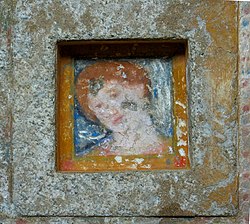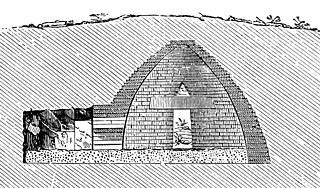
A beehive tomb, also known as a tholos tomb, is a burial structure characterized by its false dome created by corbelling, the superposition of successively smaller rings of mudbricks or, more often, stones. The resulting structure resembles a beehive, hence the traditional English name.

A kurgan is a type of tumulus constructed over a grave, often characterized by containing a single human body along with grave vessels, weapons and horses. Originally in use on the Pontic–Caspian steppe, kurgans spread into much of Central Asia and Eastern, Southeast, Western and Northern Europe during the 3rd millennium BC.

A tumulus is a mound of earth and stones raised over a grave or graves. Tumuli are also known as barrows, burial mounds or kurgans, and may be found throughout much of the world. A cairn, which is a mound of stones built for various purposes, may also originally have been a tumulus.
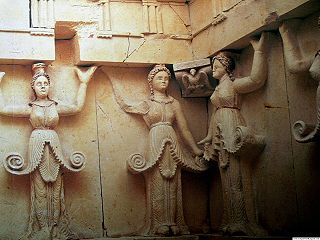
The Thracian Tomb of Svestari is 2.5 kilometers (1.6 mi) southwest of the village of Sveshtari, Razgrad Province, which is 42 kilometers (26 mi) northeast of Razgrad, in northeast Bulgaria. The tomb is probably the grave of Dromichaetes who was a king of the Getae on both sides of the lower Danube around 300 BCE, and his wife, the daughter of King Lysimachus who was a general and diadochus of Alexander the Great. The tomb is a UNESCO World Heritage Site.

Seuthopolis was an ancient hellenistic-type city founded by the Thracian king Seuthes III between 325–315 BC which was the capital of the Odrysian kingdom.
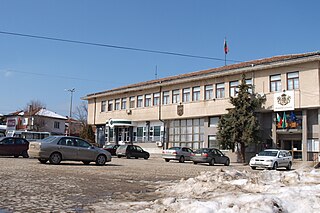
Strelcha is a small Bulgarian town with a population of 4,284 as of September 2013. The town lies 13 km to the east of Panagyurishte and 41 km to the north of Pazardzhik. It is a capital of homonymous municipality, part of Pazardzhik Province. It is situated in a valley in the southern skirts of the Sredna Gora mountain.

The Issyk kurgan, in south-eastern Kazakhstan, less than 20 km east from the Talgar alluvial fan, near Issyk, is a burial mound discovered in 1969. It has a height of six meters and a circumference of sixty meters. It is dated to the 4th or 3rd century BC. A notable item is a silver cup bearing an inscription. The finds are on display in Astana. It is associated with the Saka peoples.

Maglizh is a town in Stara Zagora Province, South-central Bulgaria. It is the administrative centre of the homonymous Maglizh Municipality. As of December 2009, the town has a population of 3,426 inhabitants.

Seuthes III was a king of Odrysia, a part of Thrace, during the late 4th century BC.

Cerro de la Minas is an archaeological site located in the modern state of Oaxaca, just to the north of the city of Huajuapan de León. The site belongs to what is called the Ñuiñe, or lowland/hot lands Mixtec cultural area. The site is located on a hill that dominates the Valley of Huajuapan, in what are now the neighborhoods of Chapultepec, Santa Rosa, Alta Vista and Del Maestro of the city. This large hill is in a strategic position over the farmlands of the valley, which provided it with its food, as well as the trade routes that cross this valley, which made it regionally important. The site contains a number of settlements and was reserved for the elite of that area during that time. Cerro de las Minas is the only lowland Mixtec archeological site open to the public.

The Aleksandrovo tomb is a Thracian burial mound and tomb excavated near Aleksandrovo, Haskovo Province, South-Eastern Bulgaria, dated to c. 4th century BCE.

The Tomb of Seuthes III is located near Kazanlak, Bulgaria. Seuthes III was the King of the Odrysian Kingdom of Thrace from c. 331 to c. 300 BC and founder of the nearby Thracian city of Seuthopolis.
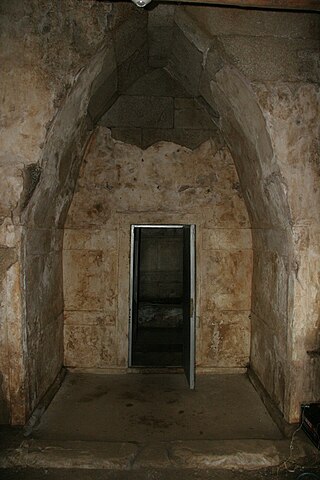
The Thracian tomb "Helvetia" mound near Shipka, Bulgaria, was built in the middle of the 4th century BC.

Golyama Arsenalka mound is a Thracian burial tumulus with a subterranean stone building near the Bulgarian town of Shipka. It dates from the end of 5th century BCE.
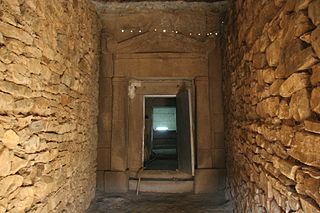
The Thracian tomb Griffins, found in Bulgaria, has a façade decorated with plastic columns and with a pediment above them. The pediment`s ends are semi-palmettes, the lower leaves of which are elongated and look like heads of griffins. The temple was built in the 5th century BC. There is a corridor made from river stones, floored with earth. The façade, the antechamber and the circular chamber are built of granite blocks. The entrances to the antechamber and the dome chamber had been closed by stone doors which were found broken during the research of the facility. The antechamber is of rectangular shape and has a double-pitched roof. The round chamber is covered with fine-made dome. The floors of both rooms are made of plastered granite slabs. Opposite the entrance of the circular chamber is situated a ritual stone bed with decorations. On a stone block in front of the bed were found gold paws. A funeral took place in the temple in the 4th century BC. The corridor was filled with river stones and soil. It was robbed in antiquity.

The Valley of the Thracian Rulers is a name which was made popular by the archaeologist Georgi Kitov and describes the extremely high concentration and variety of monuments of the Thracian culture in the Kazanlak Valley in Bulgaria. It is believed that there are over 1500 tumuli in the region, with only 300 being researched so far.
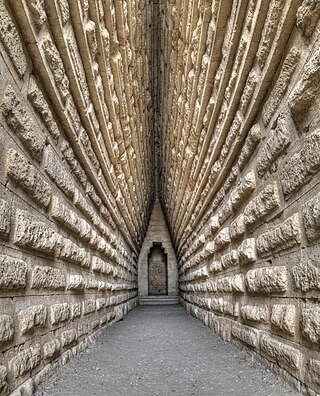
The Royal Kurgan or Tsarskiy Kurgan from the 4th century BC, is one of the most impressive tumuli (kurgans) of the eastern Crimea. The burial barrow is located in the present-day Kerch (Ukraine), which developed out of the ancient Greek town Panticapaeum (Παντικάπαιον) founded by Miletus.

The Songjiang Square Pagoda or Songjiang Fangta, officially the Xingshengjiao Temple Pagoda, is a Buddhist pagoda in the old town of Songjiang in suburban Shanghai. Originally built in the 11th century, it is the only structure remaining from the Xingshengjiao Temple, and is now enclosed in the Fangta Park. The 9-story pagoda is 48.5 meters (159 ft) tall, and it has become Songjiang's most famous landmark.

Trud is a village in Southern Bulgaria, located in Maritsa Municipality, Plovdiv Province. The total population count as of the June 2020 Census is 4017 people.

The Mogilan mound or Mogilanska mound is a burial mound in the center of Vratsa, Bulgaria.
